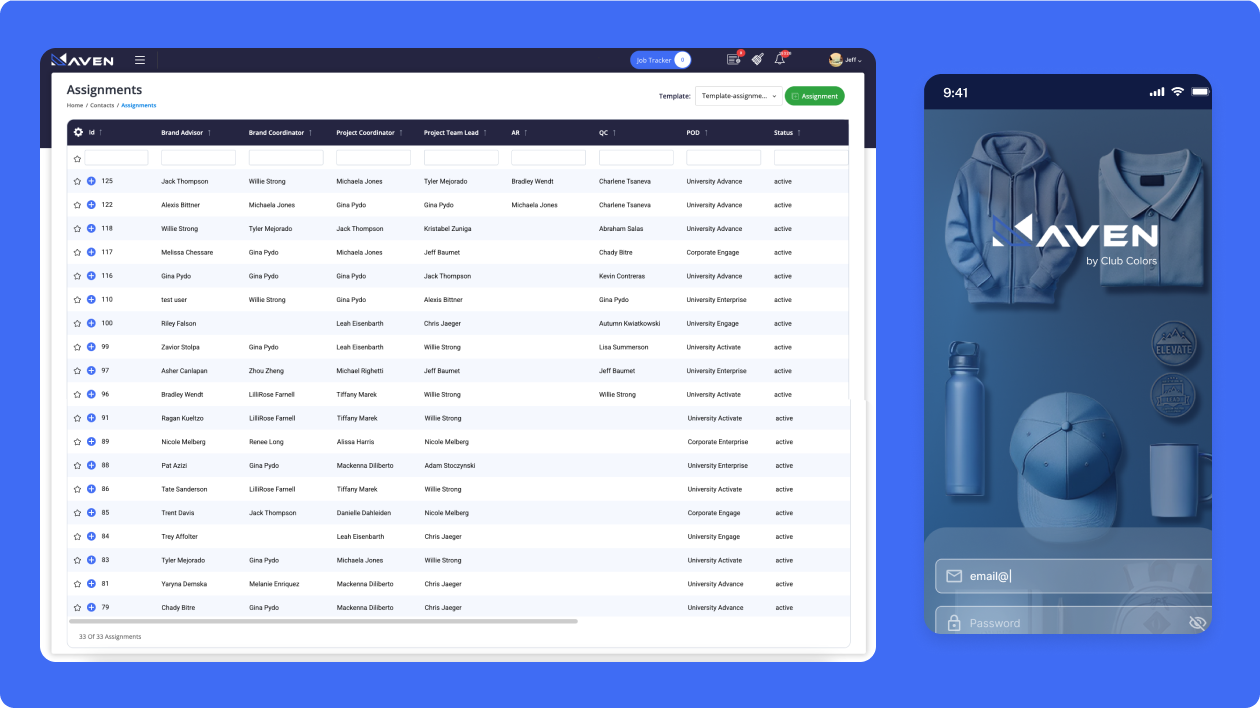
Chief Executive Officer

Secured OT infrastructure with an advanced threat detection framework.

Enhanced application security through vulnerability assessment and compliance.
From early development (shift-left) to runtime protection (shift-everywhere), our SCA security services ensure compliance at every stage of your software lifecycle.
We generate, ingest, and manage detailed SBOMs cataloging every open-source and third-party component. This tracks vulnerabilities, ensures compliance, and streamlines audits for full visibility into supply chain risks.
Our software composition analysis tools assess the legal and operational risks in permissive (MIT, Apache 2.0) to restrictive (GPL, AGPL) licenses that offer you freedom to distribute software confidently.
Third-party components often introduce risks from code flaws or unpatched software. Our SCA services detect known CVEs (Common Vulnerabilities and Exposures) in dependencies and zero-day threats to keep your applications secure.
Nested dependencies often hide critical risks. As a top software composition analysis company, we scan transitive dependencies to uncover vulnerabilities that traditional tools miss, securing even on-premises and private code environments.
SparxIT configures security composition analysis to block risky components and flag violations early. This ensures that all integrations meet policy guidelines without requiring manual effort, thereby reducing legal and security risks.
At SparxIT, open-source analysis is conducted to track all third-party dependencies within a project for security, maintenance, and compliance purposes. This eliminates shadow IT, reduces bloat, and simplifies updates or managing outdated units.
Secure containerized deployments with our image registry scanning solutions. We analyze Docker, Kubernetes, and other images for vulnerabilities and misconfigurations before they are deployed to production.
Get actionable insights with unified reports that merge SCA, SAST (Static Application Security Testing), and runtime data. Custom dashboards highlight trends, compliance status, and cross-risk analysis for faster decision-making.
Uncover hidden risks with a leading software composition analysis agency. Secure your software from open-source threats before they grow.
Audit My DependenciesDoes your application have unchecked dependencies on third-party components? Opt for holistic open source security testing from SparxIT!
Safeguard your applications from vulnerabilities in open-source and third-party libraries with SparxIT’s robust software composition analysis solutions.
We detect and block malicious packages before they enter your environment, using machine learning and threat intelligence to prevent supply chain attacks.
Access our continuously updated database that goes beyond public feeds, uncovering hard-to-find vulnerabilities in niche dependencies.
Our developer-friendly SCA testing helps fix issues like outdated libraries from the Integrated Development Environment (IDE) or Command Line Interface (CLI).
We leverage reachability analysis to prioritize security risks. Our experts identify exploitable vulnerabilities to eliminate false positives and focus on high-impact fixes.
Get context-aware Gen AI recommendations that suggest version upgrades, patches, or configuration changes, reducing mean-time-to-repair.
Maintain control of your open-source ecosystem with infrastructure monitoring, policy enforcement, and compliance tracking across all dependencies.
Our SCA software composition analysis delivers measurable business value by transforming security from a cost center to a competitive advantage.
Our zero-configuration setup automatically scans your repositories, eliminating the need for complex installations or manual tuning, and delivers immediate security insights.
We monitor developer downloads in real-time, alerting you when compromised packages enter your environment so you can block threats before they reach production.
Track internal code reuse across projects to identify security gaps and prevent vulnerable components from spreading through your private repositories and microservices.
Our pre-built integrations work seamlessly with GitHub, GitLab, CI/CD pipelines, and IDEs, embedding security directly into existing developer workflows.
Gain complete visibility into third-party library risks, including outdated dependencies, unmaintained packages, and hidden vulnerabilities that could impact your application security.
Speed up fixes with automated pull requests that suggest secure version upgrades, reducing remediation time while keeping your team focused on development.
We transform software composition analysis solution from a compliance chore into a competitive security advantage for your business.
As a leading software composition analysis firm, we automate scanning, alerts, and patching with zero disruption.
Get a Security AssessmentWe offer flexible engagement models tailored to your security needs, budget, and project scope.
Ideal for defined SCA projects with clear requirements. We deliver complete vulnerability assessments and license compliance checks within agreed timelines and budgets.
Get full-time SCA experts integrated into your team. Ideal for ongoing software supply chain security needs, featuring continuous monitoring, analysis, and remediation support.
Pay only for the SCA security services you use. Best for evolving projects needing social engineering, ad-hoc audits, or incremental dependency management.
To deliver secure, scalable, and compliant code audits, we rely on enterprise software composition analysis tools trusted worldwide.
 Black Duck
Black Duck Snyk
Snyk Sonatype Nexus
Sonatype Nexus OWASP Dependency-Check
OWASP Dependency-Check Clair
Clair Trivy
Trivy GitHub Dependabot
GitHub Dependabot GitLab SCA
GitLab SCA Azure DevOps SCA
Azure DevOps SCA Anchore
Anchore Docker Scout
Docker Scout Prisma Cloud
Prisma Cloud Snyk IDE Plugin
Snyk IDE Plugin JFrog Xray Plugin
JFrog Xray Plugin CodeQL Extension
CodeQL Extension FOSSA
FOSSA Whitesource (Mend)
Whitesource (Mend) CycloneDX
CycloneDXMeticulous approach to software composition analysis SCA process to purge away the vulnerabilities from enterprise application dependencies.
The cost of software composition analysis services depends on codebase size, scan frequency, integration complexity, and compliance requirements. We offer tailored plans to fit every business size and risk appetite.
Basic vulnerability detection, Entry-level license checks, One-time audit reports
Automated scans, License usage, Scheduled security checks, Basic policy enforcement tools
Real-time monitoring, Transitive dependency, SBOM generation, guided remediation
Want to know the cost of software composition analysis?
Contact ExpertsSoftware composition analysis (SCA) is the process of identifying and managing open-source components in a codebase. Most modern software development relies on third-party libraries. However, these components can introduce hidden security risks. SCA tools scan your software to detect known vulnerabilities, outdated packages, and license compliance issues.
It helps businesses track every dependency, including transitive ones, that may otherwise go unnoticed. By integrating with CI/CD pipelines, top software composition analysis companies in USA enable early detection and faster remediation during development. This ensures more secure, compliant, and maintainable code.
For companies that ship software frequently, software composition analysis security plays a critical role in reducing open-source risk. It gives security teams and developers the visibility and control they need to build safer applications.
Software composition analysis (SCA) helps businesses detect and manage open-source components within their code. It works by scanning your codebase and identifying every library, whether directly or indirectly included.
The goal is to uncover known vulnerabilities, outdated versions, and license risks before they cause harm. Most tools integrate into your CI/CD workflow, offering real-time alerts and actionable insights.
SCA tools scan the source code, binaries, or package managers to identify open-source components.
Identified components are checked against databases, such as the National Vulnerability Database (NVD), for known security issues.
Each component’s license is reviewed to ensure it aligns with your organization’s policies and regulations.
A Software Bill of Materials is created to give a transparent view of your software’s structure.
Tools recommend patch versions, safer alternatives, or removal based on risk level.
Example:If your code uses Log4j, the best software composition analysis tools flag the Log4Shell vulnerability (CVE-2021-44228) and guide your team toward secure remediation.
Integrating software composition analysis (SCA) into your software development lifecycle enables teams to identify and address open-source risks early. Instead of reacting to vulnerabilities after release, SCA enables a proactive approach to security and compliance. It becomes part of your CI/CD workflow, ensuring security checks are consistent and automated across all stages.
Securing the software supply chain has become a top priority for leading software composition analysis services providers. With the increasing reliance on open-source components, even a small oversight can lead to serious vulnerabilities.
It provides your team with visibility into the third-party code you use, helping to enforce trust and security at every stage of development. By integrating software composition analysis tools into your workflows, you build stronger, more resilient software from the ground up.
| Action | Why It Matters |
|---|---|
| Scan All Dependencies | Detect every open-source component, including transitive ones, in your codebase. |
| Use Real-Time Vulnerability Databases | Stay updated on the latest threats using SCA tools tied to NVD and private feeds. |
| Automate SCA in CI/CD Pipelines | Catch risks early during builds without slowing down your deployment cycles. |
| Enforce Security and License Policies | Block non-compliant packages and high-risk components automatically. |
| Monitor Continuously After Deployment | Identify new vulnerabilities in already-deployed software components. |
| Generate and Share SBOMs | Improve transparency across the supply chain with Software Bills of Materials. |
Software Composition Analysis (SCA) helps teams identify and resolve security issues in open-source components before they can cause damage. It works by scanning your codebase, identifying all dependencies, and matching them against known vulnerability databases. The real advantage is speed. SCA tools detect risks early and offer fix recommendations in real time.
Modern applications rely heavily on open-source components. While this speeds up development, it also introduces serious security and compliance risks. That’s why software composition analysis testing is now a critical part of any digital transformation strategy. It gives your team the visibility and control needed to manage third-party code confidently and protect your software from known threats.
Without SCA, modern apps remain dangerously exposed. Therefore, you need to hire a software composition analysis company to deter these threats.


Software Composition Analysis (SCA) examines open-source components, third-party libraries, dependencies, and licenses. Additionally, it identifies vulnerabilities, outdated packages, and compliance risks to ensure secure and optimized software development.


Popular SCA tools include Black Duck, Snyk, WhiteSource, and Dependency-Track. These tools scan dependencies, detect security flaws, and provide actionable insights to mitigate risks in software projects.


SparxIT stands out due to its expert security team, advanced scanning techniques, and compliance expertise. We deliver thorough vulnerability assessments and remediation strategies, ensuring robust software integrity.


Yes, modern SCA solutions analyze containerized environments, including Docker and Kubernetes, to detect vulnerabilities in OS packages, libraries, and dependencies within container images.


SCA tools generate detailed reports on vulnerabilities, license compliance, outdated components, and remediation steps. These reports help developers and security teams prioritize fixes and maintain compliance.


The cost of SCA varies based on project size, tools used, and depth of analysis. Typically, pricing ranges from free tiers for basic scans to enterprise plans for advanced security needs.
Let’s create something extraordinary together.

Explore our latest blogs - a blend of curated content, and trends. Stay informed, and inspired!
In this article, we will explore how manufacturing cybersecurity is more critical than ever before …
Written by:
Chief Executive Officer
This blog discusses the need for cybersecurity in the healthcare industry, challenges in protecting patient data, and offers solutions to create a robust defense system for hospitals and clinics …
Written by:
Chief Executive Officer